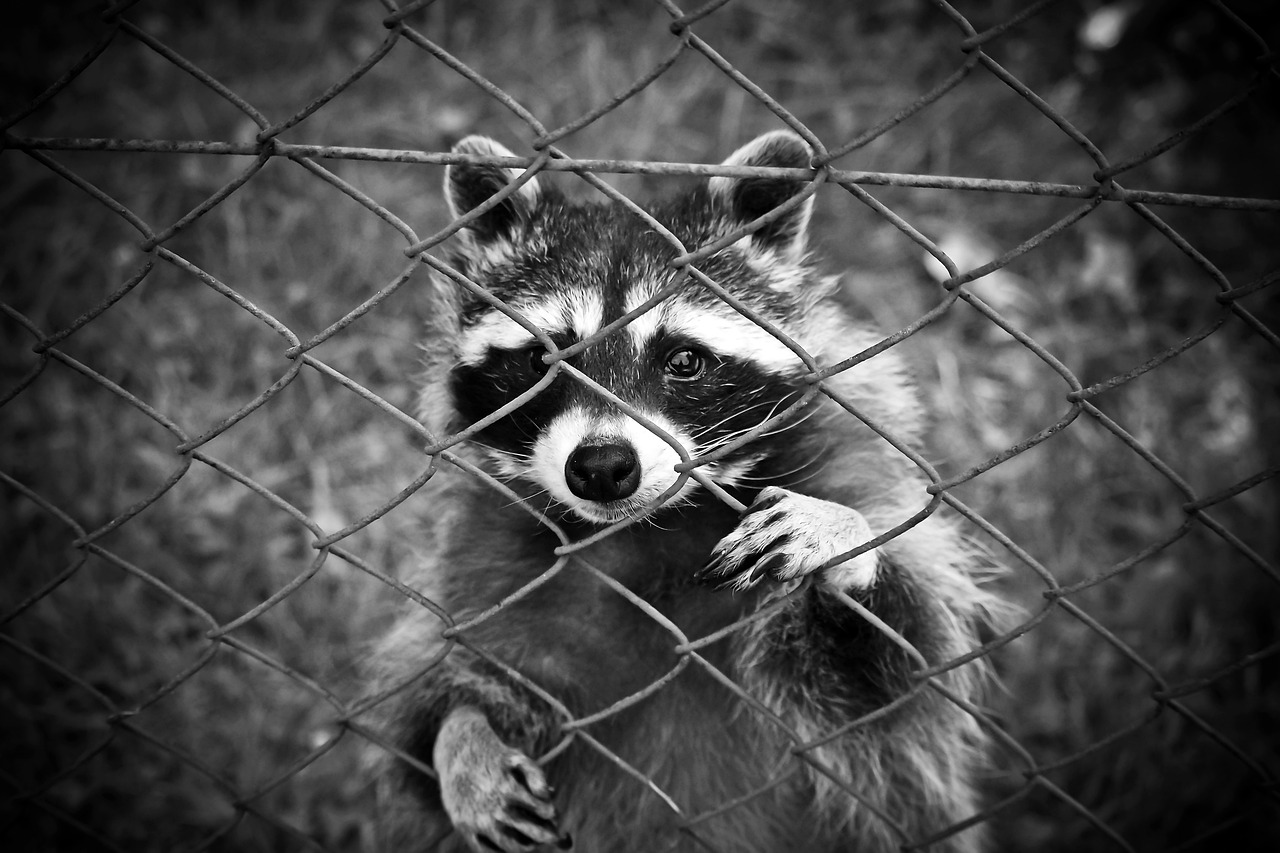Raccoons, with their distinctive masked faces and bushy tails, are known for their clever and mischievous nature. While these creatures can be fascinating to observe from a distance, they can quickly become a nuisance when they invade your property, rummage through your trash, and cause damage to your home or garden. When faced with a raccoon problem, one effective solution is trapping them. However, successful raccoon trapping often hinges on using the right bait. In this comprehensive guide, we will explore the best raccoon bait options, strategies for setting traps, and tips for dealing with these cunning creatures.
Understanding Raccoon Behavior
Before diving into the world of raccoon bait, it’s crucial to understand raccoon behavior and habits. Raccoons are opportunistic feeders, meaning they will eat a wide variety of foods, both plant and animal-based. They are omnivorous and will consume everything from fruits, vegetables, and insects to small mammals and bird eggs.
Here are some key aspects of raccoon behavior to keep in mind:
- Nocturnal Nature: Raccoons are primarily nocturnal, which means they are most active during the night. This behavior makes it essential to set traps and provide bait that is attractive to raccoons during their active hours.
- Clever and Curious: Raccoons are highly intelligent and inquisitive animals. They can quickly figure out traps and are known for their dexterity in manipulating objects. This intelligence often makes them a challenge to trap.
- Excellent Climbers: Raccoons are skilled climbers, which means they can access elevated areas such as roofs and trees with ease. When setting traps, consider their ability to climb to avoid placing them in ineffective locations.
Now that we have a better understanding of raccoon behavior, let’s explore the most effective baits to attract and trap these creatures successfully.
The Best Raccoon Baits
Choosing the right bait for raccoon trapping is crucial for success. Raccoons have a diverse diet, so there are several options to consider when selecting bait. The key is to use baits that appeal to their senses of smell and taste. Here are some of the best raccoon baits:
1. Sweet Baits
Sweet baits are highly attractive to raccoons due to their keen sense of smell and love for sugary foods. Some sweet bait options include:
- Marshmallows: Raccoons find marshmallows irresistible due to their sweet aroma and soft texture. Place a few marshmallows inside the trap and scatter some outside to create a trail leading to the trap.
- Fruit: Raccoons are known to enjoy fruits like apples, peaches, and bananas. You can use slices or chunks of these fruits as bait. Overripe fruits are particularly enticing to raccoons.
- Honey or Maple Syrup: Applying a thin layer of honey or maple syrup to a piece of bread or cracker can be a potent bait. The sticky nature of these substances makes it difficult for raccoons to resist.
2. Meat Baits
Raccoons are also attracted to meat-based baits, as they are opportunistic carnivores. Here are some meat bait options:
- Canned Cat or Dog Food: Wet cat or dog food, especially those with a strong odor, can be a highly effective raccoon bait. Place a spoonful inside the trap to lure them in.
- Fish: Fresh or canned fish, such as sardines or mackerel, can be used as bait. The strong smell of fish is a powerful attractant for raccoons.
- Cooked Bacon: The savory aroma of cooked bacon can entice raccoons. Place a few strips inside the trap to increase your chances of success.
3. Eggs and Nuts
Raccoons have a taste for eggs and nuts. Consider using these options as bait:
- Raw Eggs: Place raw eggs inside the trap, either cracked open or in a container, to attract raccoons. The smell of eggs can be quite enticing.
- Peanut Butter: Raccoons are known to love peanut butter. Smear it on a piece of bread or a cracker and position it inside the trap.
4. Anise Oil
Anise oil is known for its strong licorice-like scent, which raccoons find attractive. Soaking a cotton ball in anise oil and placing it inside the trap can be an effective bait option.
5. Scent Lures
In addition to food baits, raccoon scent lures can also be used to attract these creatures. These lures mimic the scent markings of raccoons, making the trap area appear more inviting. Scent lures are particularly useful in areas where food baits may not be enough to attract raccoons.
Now that you have a variety of bait options to choose from, let’s explore some essential tips for successful raccoon trapping.
Tips for Successful Raccoon Trapping
Trapping raccoons requires careful planning and execution. Here are some tips to increase your chances of successfully trapping these wily creatures:
1. Selecting the Right Trap
Choosing the right trap is the first step in successful raccoon trapping. Live traps are the most humane option and are widely used for capturing raccoons. Ensure that the trap is appropriately sized for raccoons and in good working condition.
2. Trap Placement
Place the trap in areas where raccoons are known to frequent. Common locations include near trash cans, garden beds, and entry points like crawl spaces or attic openings. Make sure the trap is stable and won’t tip over easily.
3. Use a Trail of Bait
To lead raccoons into the trap, create a trail of bait leading up to the trap’s entrance. This encourages them to investigate the bait inside the trap.
4. Avoid Handling Baits with Bare Hands
When handling bait, avoid touching it with your bare hands. Raccoons have a keen sense of smell, and human scent on the bait can make them wary. Wear gloves or use tools to place the bait in the trap.
5. Monitor the Trap
Check the trap regularly, especially in the early morning hours when raccoons are most active. Leaving a trapped raccoon for an extended period can cause distress to the animal.
6. Relocate or Seek Professional Assistance
Once you’ve successfully trapped a raccoon, you have a few options. You can release it back into the wild, but be sure to do so far from your property to prevent its return. Alternatively, you can contact local wildlife control authorities or professionals to handle the removal if you’re uncomfortable or inexperienced in dealing with wildlife.
7. Secure Your Property
After trapping raccoons, take steps to secure your property to prevent future infestations. This may include securing trash cans, repairing any entry points, and eliminating potential food sources.
Legal Considerations
It’s essential to be aware of local laws and regulations regarding trapping and relocating raccoons. In many areas, it may be illegal to trap and relocate wildlife without proper permits. Always check with your local wildlife agency or municipality for guidance on raccoon trapping and removal.
Common Mistakes to Avoid
While trapping raccoons, there are some common mistakes that you should avoid to increase your chances of success:
1. Using Ineffective Bait
Choosing the wrong bait or using spoiled bait can deter raccoons instead of attracting them. Always use fresh, enticing bait options.
2. Poor Trap Placement
Placing traps in the wrong location can lead to failure. Raccoons have specific travel routes, so it’s crucial to set traps in areas they frequent.
3. Neglecting Safety Precautions
Raccoons can carry diseases such as rabies, so it’s vital to handle traps and captured raccoons with caution. Wear gloves and avoid direct contact with the animals.
4. Leaving Trapped Raccoons Unattended
Leaving a trapped raccoon unattended for an extended period can cause unnecessary stress to the animal and may lead to injuries as they attempt to escape.
5. Failing to Secure Your Property
Even after trapping raccoons, neglecting to secure your property can lead to repeat infestations. Address the root causes, such as access to food sources, to prevent future issues.
Natural Deterrents
In addition to trapping, you can employ natural deterrents to discourage raccoons from frequenting your property. These methods are non-lethal and aim to make your property less attractive to raccoons:
1. Motion-Activated Lights and Sprinklers
Install motion-activated lights and sprinklers in areas where raccoons are a problem. The sudden burst of light or water can startle and deter them.
2. Remove Food Sources
Ensure that your property is free of potential food sources for raccoons. Secure trash cans, pick up fallen fruits, and store pet food indoors.
3. Seal Entry Points
Raccoons can access homes through small openings. Inspect your property for potential entry points and seal them to prevent raccoons from entering.
4. Remove Shelter
Raccoons may build dens under decks or in crawl spaces. Remove or secure potential shelter areas to discourage them from nesting.
5. Make Noise
Raccoons prefer quiet environments, so making noise or playing a radio near their frequenting areas can deter them.
When to Seek Professional Help
While DIY raccoon trapping can be effective, there are situations where it’s best to seek professional assistance:
- Multiple Raccoons: If you’re dealing with a large number of raccoons, it can be overwhelming to trap and remove them all on your own. Professionals have the experience and resources to handle such situations.
- Infants or Injured Raccoons: Handling infant raccoons or injured adults can be dangerous and requires expertise. Professionals can safely and humanely deal with these situations.
- Raccoon-Proofing Your Property: If you’ve struggled with repeat raccoon infestations, professionals can help you assess your property and implement long-term solutions to prevent further issues.
- Legal Compliance: In some areas, trapping raccoons without the appropriate permits or following specific regulations can result in legal consequences. Professionals are usually well-versed in local laws and regulations.
Conclusion
Dealing with raccoons invading your property can be challenging, but with the right knowledge and tools, it is manageable. Selecting the best raccoon bait is a crucial step in successfully trapping these creatures. Whether you opt for sweet, meat-based, or scent baits, understanding raccoon behavior and following best practices for trapping will increase your chances of success.
Remember to prioritize safety when trapping raccoons, and always consider the welfare of these animals. If you find raccoon removal to be a complex or overwhelming task, don’t hesitate to seek professional assistance. By taking appropriate measures and employing natural deterrents, you can keep your property raccoon-free and minimize the impact of these clever and curious bandits on your life.










